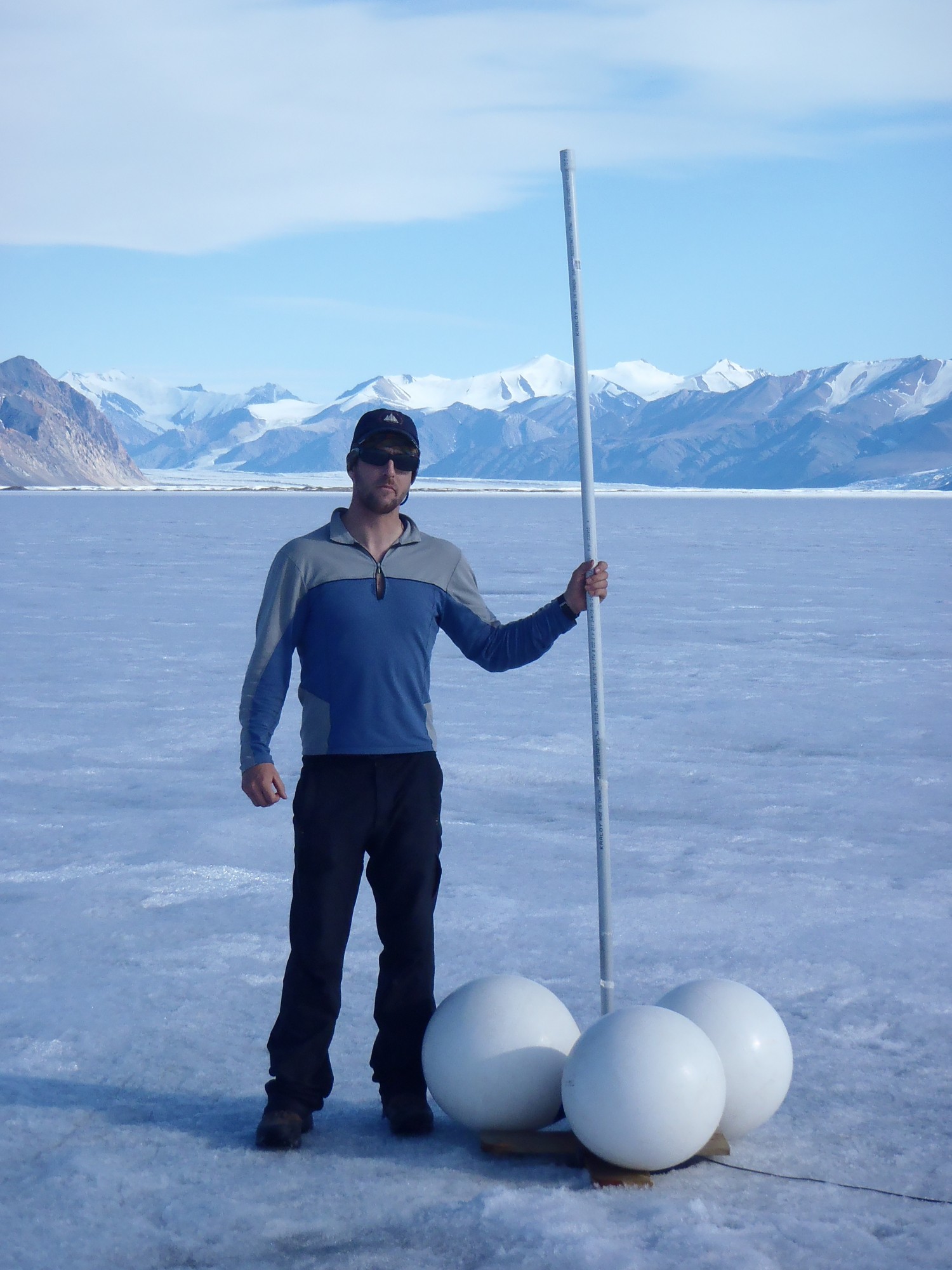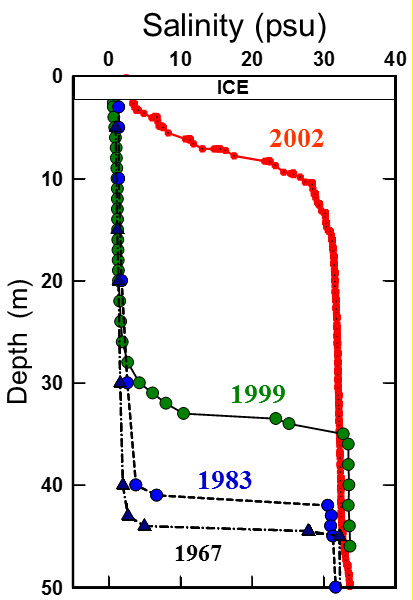Epishelf Lakes Research Projects
Epishelf lakes form where meltwater runoff from land is trapped in a fiord or bay behind a floating ice shelf. The freshwater layer, which lies directly on seawater, can grow to be 100s of meters deep and exist for centuries, creating a rare and fascinating system where freshwater and marine organisms can exist in the same water column, separated by a step-like change in salinity. Until recently, a number of epishelf lakes existed along the northern coast of Ellesmere Island, however, thinning and break up of ice shelves due to climate warming has resulted in the widespread loss of these lakes, including through sudden drainage events. The WIRL lab aims to monitor the few remaining epishelf lakes, and understand the dynamics and evolution of these unique systems.
Post doctoral fellow Andrew Hamilton has investigated changes in the depth of the Milne Fiord epishelflake, the last deep epishelf lake in the Canadian Arctic. Data collected through a combination of extensive water column profiling, remote sensing, and the deployment of an mooring, has revealed that epishelflakes are much more dynamic than previously thought.
When Derek Mueller was a PhD student, he chronicled the break-up of the Ward Hunt Ice Shelf and drainage of the largest epishelf lake in the Northern Hemisphere. This work used a combination of remote sensing and field data to record the fracturing of the ice shelf and the subsequent loss of the freshwater in the fiord.


